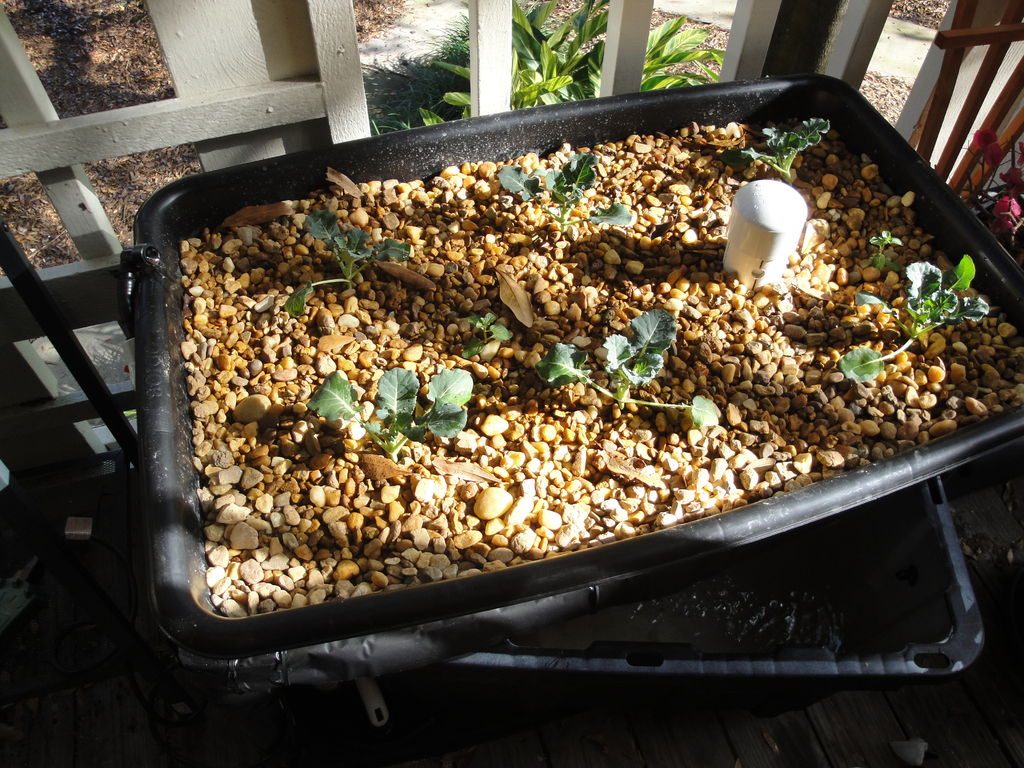These days in-house gardening is becoming a trending hashtag, where some are growing in-house vegetables as just a hobby and on the other hand some merely want to go organic and eat healthy. So, in this ongoing trend the most trending system now days are diy aquaponics.
In a layman’s language, aquaponics is a barter system between aquatic animals like fish, snails, crabs etc and hydroponics i.e. growing plants without soil. In this system, aquatic animals and plants are kept together to grow in a symbiotic amalgamation. Wherein, the animal waste becomes food for the plants, and in return the plants clean water by extracting nitrogen for the animals to live safe in water.
Today’s time calls for more of these types of arrangement as this is environment friendly, requires limited amount of water and doesn’t require much space . This uses animal waste as the food for plants therefore, can be called as 100% organic.
How Does Aquaponics Works:
Things you will require:-
- The best aquaponic Fish tank- The first thing which is required is a fish tank, we need a durable material so go for fiberglass or good quality plastic with a flat bottom so that it is easy to clean.
- The ideal or recommended Fishes- Choose fishes which can sustain in every situation and has a long life. The ideal or recommended fish would be tilapia.
- Aquaponics Grow bed- The plants are grown hydroponically without soil, select the bed according to the size of the tank and also the quantity of seeds.
- Pump- Pump is required to transfer animal waste to the bed and filtered water to the fish rank.
- pH testing kit- This is the most important thing which is required, pH kit is essential for testing the water at all levels and may be changing the water if required. The pH level should be maintained around 6.5-7.0
- Fish food- Fish poop is the source of food for plants, the fish have to fed timely so that plants can get food when required.
This system works under a simple process, where the fish tank and growing bed are connected with a tube to share water. The pump transfers the animal waste which is high in ammonia into the growing bed, the microbes converts the waste into fertilizers which becomes the food for the plants. The fertilizers are rich in nitrogen which is extracted by the plants making the water fit for animals to survive in water. You only need to feed the fishes, rest the cycle will go on.
Why checking the pH level is the most important step?
As water is the most important part of the aquaponic process and plant and aquatic animals both have different pH need, therefore, checking and maintaining the pH level which is perfect for both is very important.
The perfect pH level for both should be around 6.5-7, as below 6.5 the water will be acidic which may cause fishes to die as fishes prefer alkaline environment. Whereas, plants prefer acidic environment and above 7 the water will be alkaline, therefore, 6.5-7 will be an ideal pH level for both.
Types of Aquaponic system
There are 3 types of aquaponic system, all based on hydroponic method.
- Media Bed System: This method is the easiest of all the three methods, this method uses a rooting medium for plants to grow like gravel, perlite or river rocks on which the plant will grow. The media bed and fish tanks are connected with a tube and water is pumped from the tank to the bed. The gravels are permeable to water to hold for a long time, so that the roots of the plants can take all the nutrients required and send back the filtered water to the tank.
- Nutrient Film Technique: These technique use channels to circulate water with various nutrients required for plants to grow. These channels are basically tubes with holes where the plants are planted and the water with nutrients are sent from the fish tank through pump via these piles and plants takes these nutrients through its bare roots. Once the water reaches the end of this channel it bounces back to the fish tank.
- Deep Water Culture: Deep Water culture method which is also known as the raft method, works on the raft, where holes are cut onto the raft and plants are positioned in these holes. As we are not growing the plants in soil, therefore, plants are suspended in nutrient and oxygen rich water so that plants can thrive fast.
Frequently asked questions before starting:-
Things required for setting an aquaponic environment.
For the set up one will require a fish tank, fishes and fish food, plant bed, seeds, pump, pH testing kit and water.
Why aquaponic is the trendy way to grow plants?
Environment friendly, there is not too much water involved in the whole process. 100% organic as there are no chemicals involved, the fertilizers are made through animal waste. Can easily thrive in small places/areas. Both animals and plants can grow at the same time and same place, therefore it saves time and energy.
When we can grow with aquaponic?
You can grow plants in aquaponic setup during any time of the year. We need to take into account the season of the vegetable for example lettuce grows best in winter. Also, the climate in which you live in is a deciding factor.
What type of animals and fishes we can use?
Any aquatic animal can be fit for this process like snail, crab fish. Most commonly used animal is fish, as fish poop as high ammonia with when converted into nitrogen becomes food for plants. The best fish for this is Tilapia as it fits in all weather easily.
Most important thing to take care while setting the system.
Maintaining the correct pH level is most important
What type of fish tank should be selected?
One of the important components is the fish tank; the process will involve cleaning of the tank, so choose the one with flat bottom. Other factor is the material; the tank should be of fiberglass or strong plastic to ensure durability.
Lastly, The Most Important Question Which Comes Up Is That, What Are The Plants Which Grow Best In Aquaponic.
Nearly, all the plants can grow well in aquaponic, from salad vegetables to herbs to leafy vegetables. The plants which can thrive in low nutritional environment can go very well in aquaponic.
Here we have list down 10 best plants to grow in aquaponic:-
- Cherry tomatoes
- Lettuce
- Chives
- Cucumbers
- Basil
- Broccoli
- Mint
- Kale
- Swiss chard
- Arugula
Moreover, one can also grow fruits like strawberry, banana, lime, oranges, and pomegranate.
Now, as we have understood all the details about the aquaponics, let’s do a quick DIY from the below mentioned list. DIY’s are always fun and when it involves your favorite fish and vegetable then it becomes even more fun.
The things which you require are mostly same for all the DIY’S like fish tank, grow bed, medium, fishes and a pump. Just few things are dependent on the type of aquaponic system you want to choose.
Top 10 DIY Aquaponics Ideas
Sink and Bathtub aquaponic system
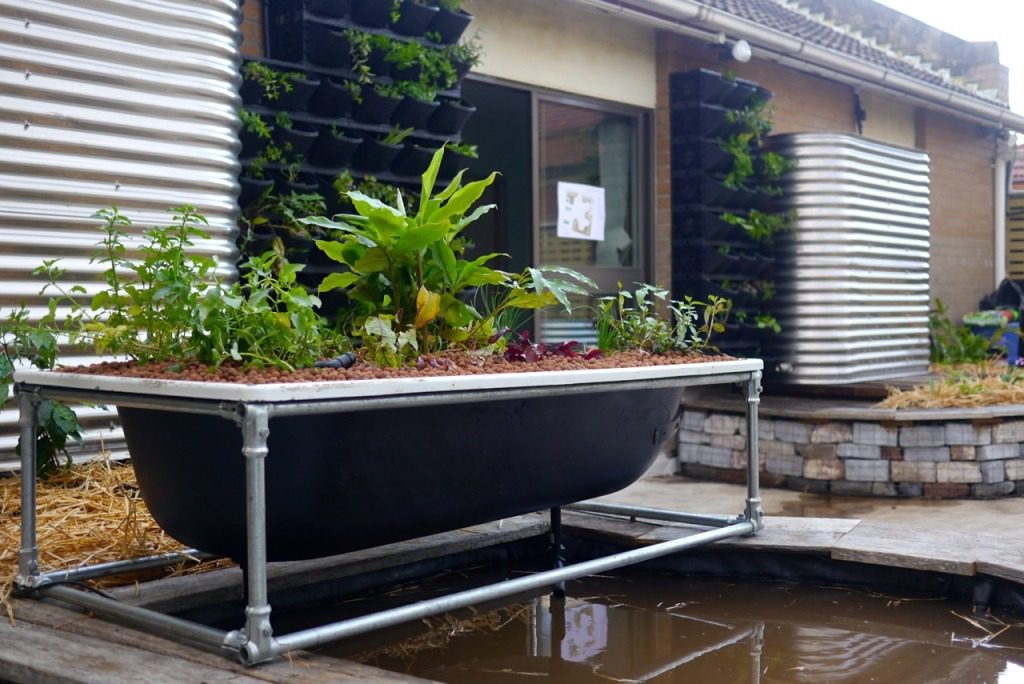
Planning to renovate your home, then don’t throw the old bathtub and kitchen sink away because we will do a quick DIY with these things. Using the sink and bathtub makes the process easier because these already have tube fixtures for making the connections.
Fix the sink on a height in your backyard and place the bathtub under it, fill the sink with the growing medium of your choice like coconut coir, rocks or any other easily available medium, after this spread plant seeds on the medium evenly.
Now coming to the bathtub, choke all the holes of the bathtub so that the water is not drained out at any point, fill the tub with water and leave fishes of your choice into it. Connect the PVC pipe of the sink and tub so that the water can be circulated. Further, connect the pump with these pipes so that the pressure is created and the water can be pumped upwards. You can also paint these tubs with the color of your choice to make it look more attractive.
Vertical Rack arrangement aquaponic system

Place the plastic racks one above the other, you can keep as many racks as you want and on the bottom of the rack place a plastic container. These racks will be growing beds and the container at the bottom will be the fish tank. Make a hole in all the rack to pass the connecting pipe for the water to circulate. Now connect all the pipes with the fish tank and attach the pump. The size of the pump also depends upon no. of racks, increase in the height of the pump will result into increase in the power of the pump as water will be required to be pumped up to a height. The best part about this activity is the in each tray you can grow a different vegetable or fruit of your choice.
Horizontal plastic container arrangement

Place two or more containers horizontally as a growing bed and connect all the two or three containers to the fish tank which will be placed under them. Now connect the pump with these containers and add the growing medium and seeds to the growing bed and water, fishes to the fish tank.
Maze aquaponic system with nutrient film technique
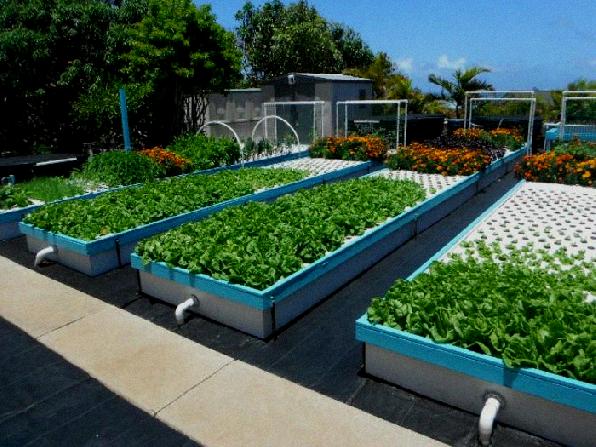
Place the connected PVC pipes horizontally like a maze which is also known as channels, now cut holes on the pipes to submerge the roots of the plants which will be placed inside the holes. The air may pass between the holes and the plants so you can fix it by filling the extra space with the coconut coir or clay. Now take an aquarium or a plastic container and fill it with water and fishes of your choice connect these together and lastly wire the pump. The pump will pump up the water with nutrient from the fish tank to the roots of the plants through these pipes, and at the end it the filtered water will drain back to the tank.
Aquaponic bucket DIY system
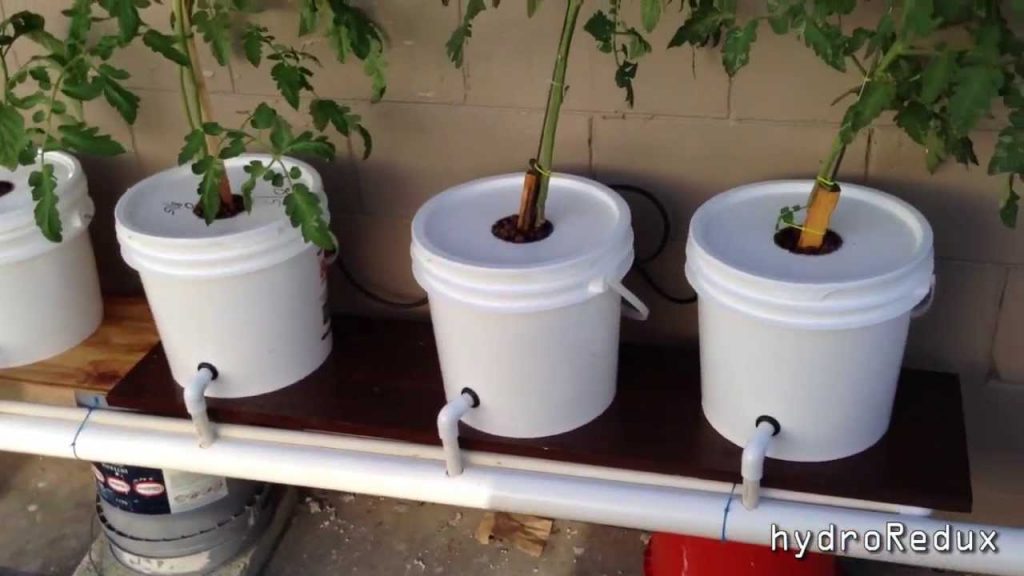
Cut two buckets vertically into halves to make a small plant bed and place the third one below these two for the fish tank. Connect all these buckets with the PVC pipes and wire the pump to pump up the water. Now add water and fishes in the third bucket and medium and plants in the other two buckets. This is one of the most economic DIY for anyone who want to try aquaponic.
Water Tank DIY
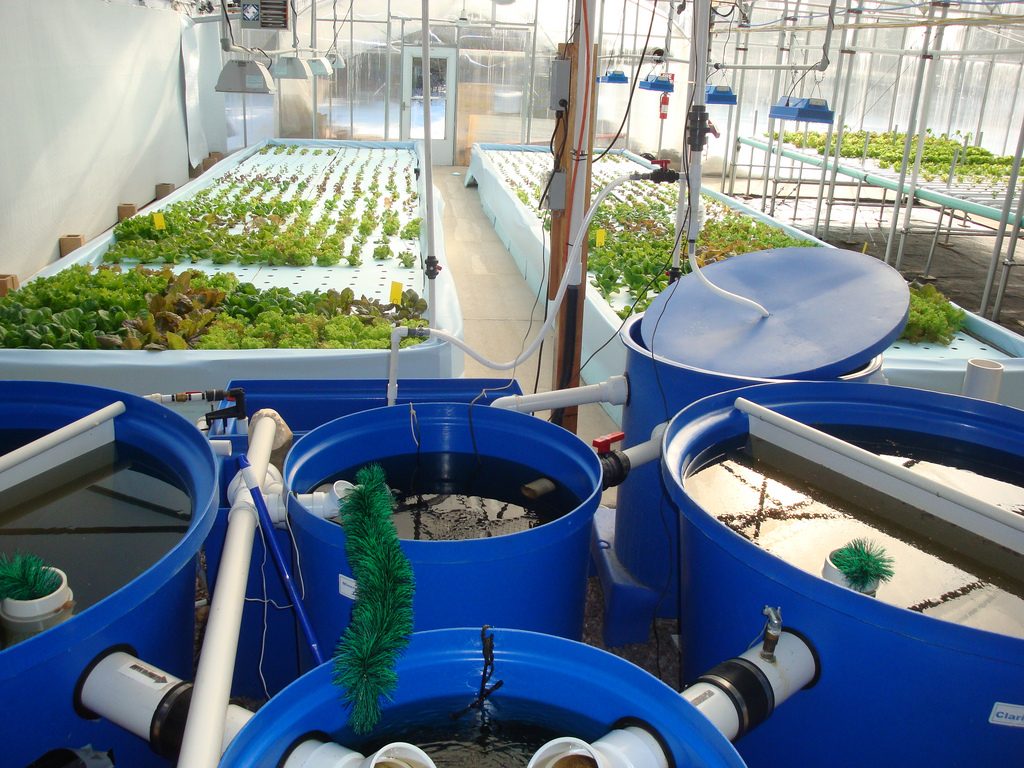
Take a water tank; size of the water tank depends upon your choice. Now place a raft over the tank, make sure to make holes on the raft. Add plants into the holes, you can fill the extra space with any medium so that no air passes through it. Here we are using the deep water method so fishes are not required we will fill the oxygen and nutrient rich water into the tank that fill flow through the roots helping the plants to thrive.
Steel frame container DIY setup
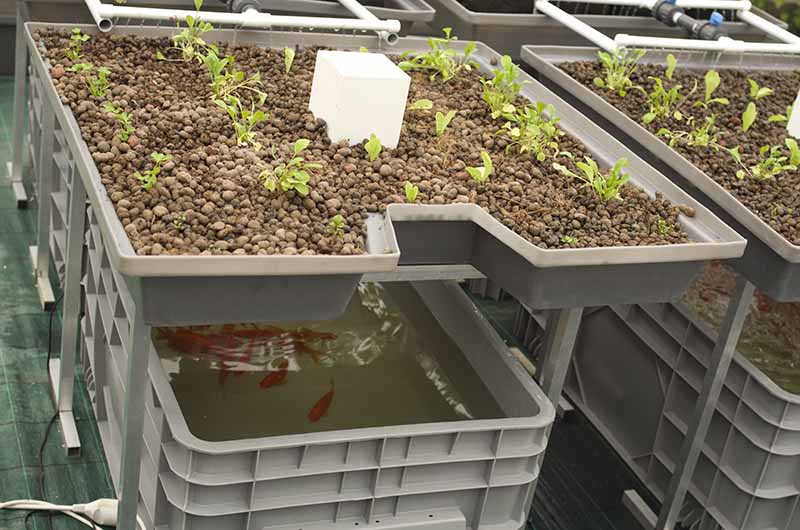
If you seriously want to try aquaponic then all the material is easily available at your nearest IKEA store. All you need here is a double steel rack, and two containers. Place one of the container on the upper layer of the steel rack and other container on the bottom of it. Fill the upper container with the medium and plants which will act as plant bed and fill other one with water and fishes like an aquarium. Now connect the piper and pump to start the water flow.
Aquaponic pond DIY
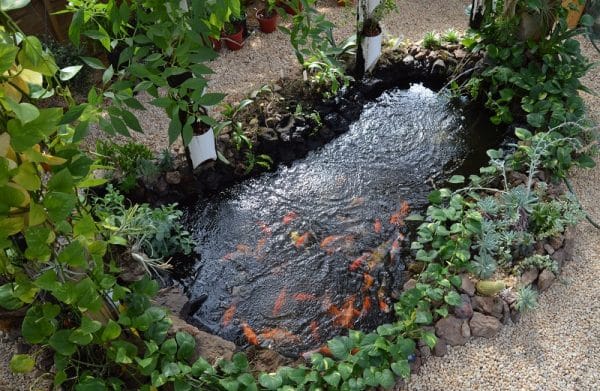
Is there any pond in your house which is left unused from last couple of years? If the answer is yes then now it’s time to adopt this system to make that useless space the most beautiful one. Just above the pond install vertical PVC pipes, as many as you want prior installation make holes in the pipes for fixing the plants. Now add fishes in the pond and connect the pond and the pipe. Lastly, wire the pump with pond to pump up the water to these pipes.
Wooden crate DIY

Wooden crates are another pocket friendly way to try this system. Install 2 wooden crates side by side and place the plastic sheet inside the crate before placing the medium. Now add a plastic container (any plastic box in which you store your clothes) add water and leave your favorite fish inside it. Further connect the wooden box and plastic box With pipes and wire the motor.
Glass aquaponic DIY

Fancy houses always look for something fancy. Let’s try glass this time. Use the already placed aquarium at you home to grow vegetables. Wires a pump to the aquarium and connect them with another glass flat container, half the size of the aquarium. Place this flat glass container above the aquarium not over it. Add medium in the glass container plant seeds and you are good to go.
Conclusion
Aquaponics are proved to be a successful system of plantation taking over the current practices of farming. Here we have discussed about:
- The process of growing plant in aquaponic.
- Things required in the process, Fish tank, Fishes, Grow bed, Pump, pH testing kit, Fish food.
- Why checking the pH level is important
- Types of aquaponic systems which one can choose, media bed, nutrient film technique and deep water culture.
- We also answered few frequently asked questions, so that things are more clear
- Finally, we listed down the best vegetables and fruit one can grow in aquaponic
- We also mentioned here, quick activities to try yourself or involve your kids for these fun activities.
We hope now you are ready to grow your favorite vegetable in your backyard with your favorite fishes accompanying them.
Do share your experience with us, so that we can learn more and discuss about the same here.

